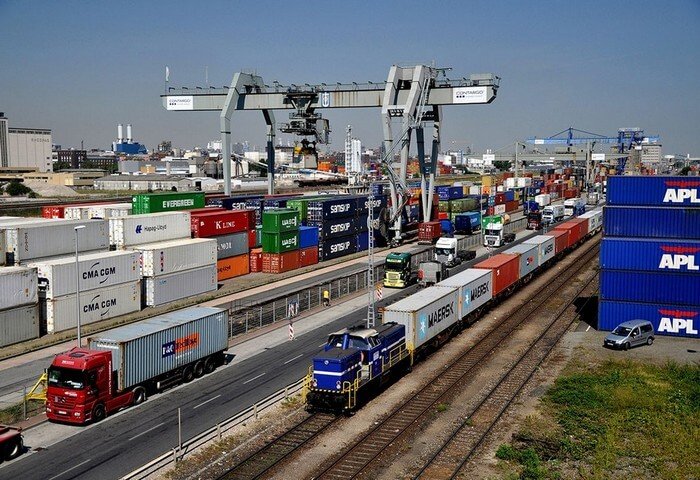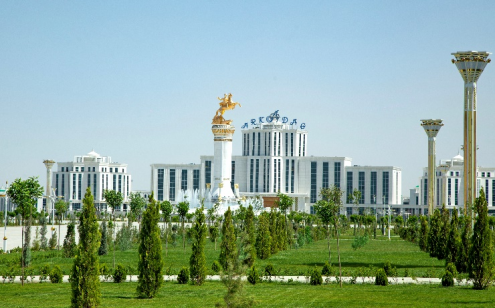As impact of the COVID-19 pandemic subsides, the demand has rocketed in global markets, and it is becoming increasingly difficult to find raw materials for production to meet such increase. The excessive increase in demand is the result of consumers spending the financial support provided by the states during the quarantine. This has also increased the workload of the transport sector and even caused it to become inadequate. This, in turn, negatively affected the supply of the raw materials. In addition, there are staff shortages in the global ports because of the restrictions imposed due to the pandemic. This situation also contributes to the deepening of the transportation crisis.
There are two main reasons for the shortcomings in the global transport sector. The first of these is the increase in handling (drop-off) times at ports. The second reason is commercial rivalries. During the first six months of the pandemic, due to production constraints and supply chain disruptions, the number of cargo ships transported per year fell significantly below their pre-pandemic capacity. The main reason for this is the inability of ports to adequately receive the ship’s cargo. This resulted in containers spending twice as much time on the water as normal.
Disruptions in the operation of ports also affect the economy of the country, since they are one of the logistics centers of the state through which the transportation and transit of goods is carried out. The ports are the gateway for the cargo transported by sea from the interior regions of the country abroad.
Logistics and supply chain include not only maritime transport, but also air, road, rail, and pipeline. 90% of global trade is carried out by sea due to its low cost. The waits and additional costs incurred due to difficulties in sea transportation lead countries to seek alternative modes of trade. This trend contributes to the choice of rail transport, which is between the cheap but slow sea route and the expensive but fast air route.
Rail transport is just as reliable and affordable system for long-distance freight transport as is the sea transport. This type of transportation requires slightly lower maintenance and operating costs, resulting in overall cost savings. Railroad tracks are especially preferred for transit traffic. Their advantages are the ability to deliver goods through distant mountainous and hard-to-reach places. This type of transportation is also more profitable when it comes to costs.
Freight railroads account for roughly 33% of U.S. long-distance freight volume (measured by km/ton). Countries, especially the US, equip the rail transport system with the latest technologies as they play an important role in domestic and foreign trade.
In March 2021, the accident with the container ship caused the blockage of the Suez Canal, one of the busiest sea routes in the world, resulting in the daily loss of $10 billion for the global market. This accident sparked interest in alternative transportation routes. One such alternative is the Belt and Road Project, promoted by China. The ‘belt’ refers to overland transportation systems, including automobiles, railways, oil and gas pipelines, and other infrastructure projects stretching from central China to Central Asia, Moscow, Rotterdam and Venice. Instead of a single route, the project envisages the creation of corridors consisting of land bridges in the direction of Asia-Europe.
A significant part of China's new Great Silk Road project runs through Central Asia. The China-Kazakhstan-Turkmenistan-Iran railway, which is considered the starting point of the Silk Road, was opened and commissioned in February 2016. Cargoes transported from Zhejiang to Tehran by 7,908-kilometer rail lines are delivered in 9 days, which is 25-30 days shorter than the sea route. Delivery of freight from Europe to China by rail takes 5-9 days, by air 15-19 days, by sea 37-50 days. The project, which will connect 60 countries by rail and sea, is expected to cost $8 trillion. In addition, the railway transports’ capability to reach inland markets compared to ports makes this mode of transportation preferable in terms of price and time.
In recent years, Turkmenistan has been actively involved in regional and international cooperation projects. The modern Silk Road will enable Turkmenistan to play an important role as a trade and transit bridge. To this end, the country is rapidly developing its national road and rail communications. Ashgabat also has a large international airport that can serve as a regional distribution center.
Over the nine months of 2021, international cargo transportation by rail amounted exceeded 6 million tons. Turkmenistan is on the way to become an important hub in transportation with existing, renewed and new highways and railways. All this heightens the role of Turkmenistan as a regional transport country in solving the problem of lack of raw materials in the world.
Nurmyrat Mommayev,
PhD Candidate at Marmara University's Department of Political Science and International Relations in Istanbul, Turkey









30635-90x604.jpg)




30625-90x604.jpeg)
_(1)30624-90x604.jpg)


